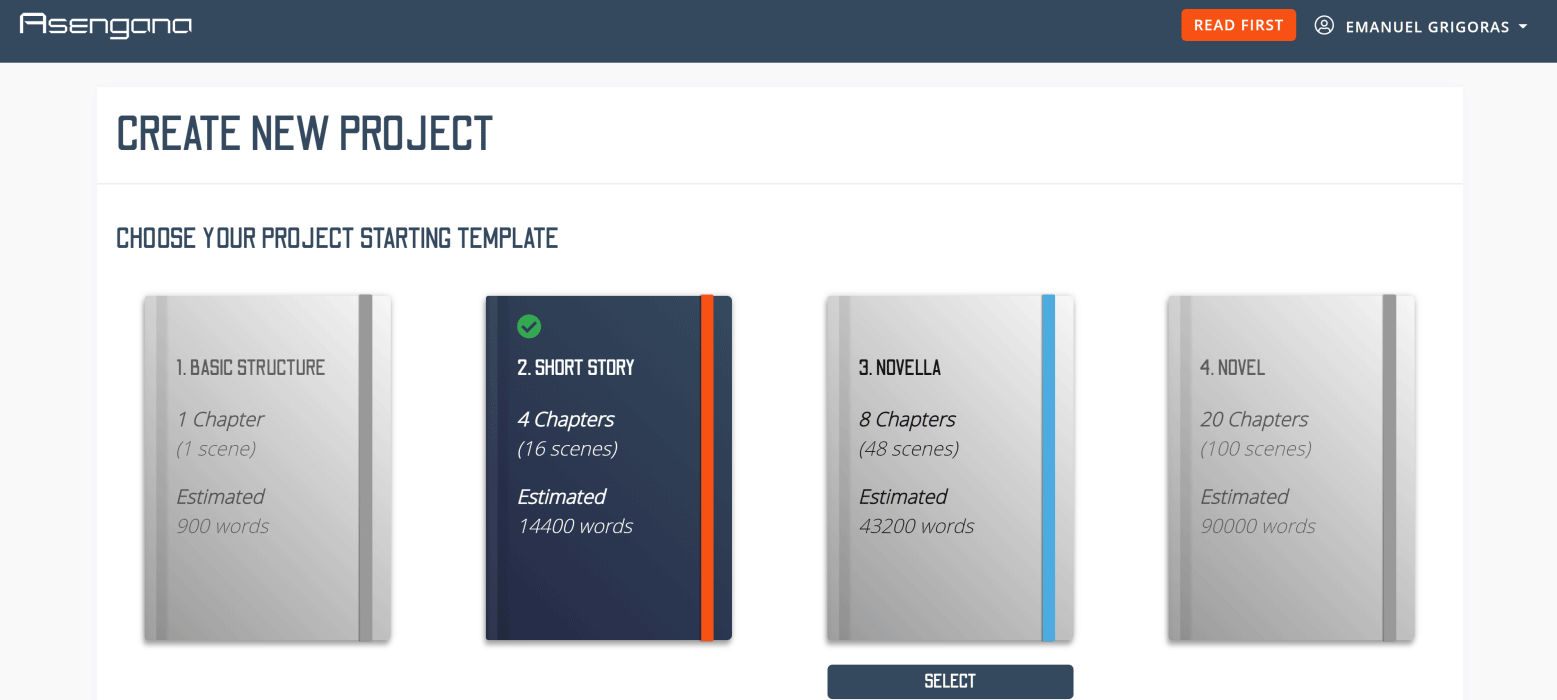Do you want to make a book project but do not know where to start? Story templates are an easy way for writers like you to get your story idea down on paper without spending too much time.
From our conversations with the writers in the Asengana community, we know there are writers that want to start the manuscript the second they logged in and writers that plan for 6 months before writing the first scene. The template options we offer are useful for both.
The first template is basic. You start with one chapter and one scene and add more as needed. Quite a few writers just want to write in their manuscript with no planning because they had the premise and played with it in their mind for quite some time.
For most, starting template with several chapters and scenes and with an initial allocation of plot points has benefits from having a working structure to the visual comfort of the three acts structure. While we’re working on new templates, we chose the ones we offer now because these seemed to gather the most interest during our research.
From the first-time writer advised to not put the chariot before the horses to the professional writer who wants a familiar structure, our first task was to create templates for novel, novella, and short story, including plot points. It is useful for two major ways of writing that we met so far (I’m not saying that there aren’t more, it’s just what we found to be most used):
- Start from a premise developed into 7 plot points: Opening, Inciting Incident, Plot point 1. Middle point, Plot point 2, Climax, and Conclusion. Continue with a simple or more complex enrichment similar to the Snowflake method towards developing a summary and an outline further used into identifying scenes. (detailed description included in the onboarding process) – and based on the feedback from the first-time writers, is seems to help them move easily beyond the “how to start” point.
- Start with the principal character and identify his main need, motivation, characteristic. This one seems to be used mostly by professional writer since they are familiar with the structure of a manuscript and allocate more time to planning and research before they start writing the first scene.
These templates will help keep your project organized by setting deadlines and managing different tasks in one place. Give Asengana’s free story templates a try!




